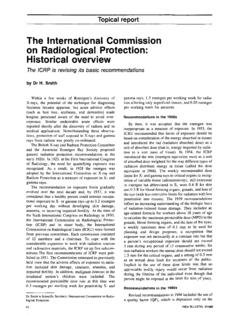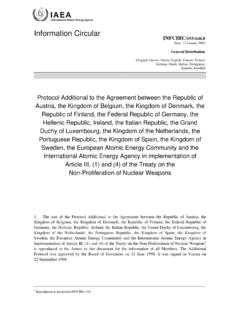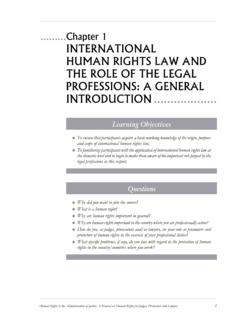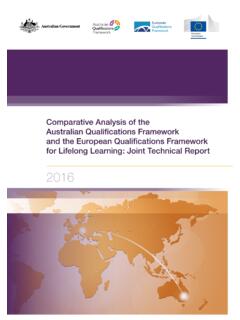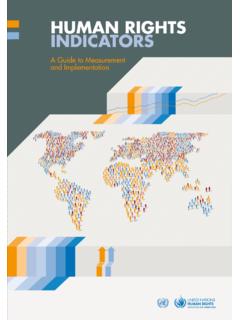Transcription of International law and nuclear energy: Overview of the ...
1 FEATURES. International law and nuclear energy: Overview of the legal framework The global legal order for the atom's safe and peaceful uses is grounded on a mix of binding norms and advisory regulations by n eaceful applications of nuclear energy and used in such a way as to further any military Mohamed all the promise they entail for humanity are purpose". ElBaradei, Edwin paradoxically often perceived in juxtaposition with Over the past three decades, International co- Nwogugu the prospects of nuclear weapons' proliferation and operation in the field of nuclear energy has yielded and John Rames nuclear war. The mixed perception is under- a mix of legally binding rules and advisory stand- standable: the materials, knowledge, and expertise ards and regulations. This article presents an over- required to produce nuclear weapons are often in- view of this global legal framework for nuclear distinguishable from those needed to generate nu- energy's safe and peaceful development.
2 It specifi- clear power and conduct nuclear research. cally addresses areas of nuclear safety, radiation As a result, the focus of the International com- protection, radioactive waste management, the munity has always been to ensure that nuclear transport of radioactive materials, emergency assis- energy is used peacefully and safely. The approach tance and planning, civil liability for nuclear dam- is defined by a complex network of national and age, physical protection of nuclear material, armed International measures. For while it was accepted attacks against nuclear installations, and IAEA. that the primary responsibility for the regulation of safeguards and verification. the use of nuclear energy rests with national authorities, it has been equally recognized that other countries may be affected as well. Conse- The safe use of nuclear energy quently, the regulation of nuclear energy, like so many other human activities which could have Article of the IAEA Statute empow- potential transboundary impacts, necessitates the ers the Agency to establish or adopt standards of endowment of the International community with safety for the protection of health and the mini- residual responsibility, or in certain instances co- mization of danger to life and property.
3 That responsibility, to ensure among other things uni- provision also requires that those standards must formity of standards, co-ordination, pooling of re- be applied to the IAEA's own operations and to sources and services, as well as compliance.* operations making use of materials, services, In this respect, the IAEA, among other interna- equipment, facilities, and information made tional and regional organizations, has served as a focal available by the Agency or at its request or under point. Article II of die IAEA Statute provides that its control or supervision. States which receive "the Agency shall seek to accelerate and enlarge the technical assistance or reactor project assistance contribution of atomic energy to peace, health, and must sign an agreement with the IAEA in which prosperity throughout the world" and to ensure so far they undertake to apply to the assisted operations as it is able, "that assistance provided by it or at its the Agency's safety standards and measures that request or under its supervision or control is not are specified in the agreement.
4 The Statute also authorizes the Agency to apply its safety stand- ards, at the request of States, to any of their operations or activities. Mr. ElBaradei is Assistant Director General and Director of the In fulfilling its statutory function of develop- IAEA Division of External Relations. Messrs. Nwogugu and Rames are senior staff members in the IAEA legal Division. ing safety standards, the IAEA takes account of This article is based upon more comprehensive information in the two-volume book, The International Law of nuclear En- ergy: Basic Documents, which the authors edited and was * See generally, "The Role of the IAEA in the Development published in 1993 by Martinus Nijhoff Publishers, Box of International Law", by Dr. Hans Blix, Nordic Journal of 163, 3300 AD Dordrecht, The Netherlands. International Law, 58 (1989). 16 IAEA BULLETIN, 3/1995. FEATURES. the work of relevant International scientific and culture Organization (FAO) of the United Nations, technical bodies, such as the International Com- and the Pan-American Health Organization mission on Radiological Protection (ICRP), the (PAHO).
5 The IAEA Board of Governors approved United Nations Committee on the Effects of the revised standards in September 1994. Atomic Radiation (UNSCEAR), the World The BSS are complemented by other stand- Health Organization (WHO), and the Interna- ards dealing with particular aspects of radiation tional Labour Office (ILO). protection: occupational protection; protection Concern to ensure the safe use of nuclear of the public and the environment; and interven- energy which includes activities making use tion in case of a nuclear accident or radiological of the by-products of nuclear energy and the use emergency. of radioactive substances in medical, industrial, and agricultural activities is caused by the capacity of ionizing radiation to cause damage to Safety of nuclear power plants living beings and the environment. The safety objectives strive to protect living beings, society, The IAEA has developed nuclear Safety and the environment against the adverse effects Standards (NUSS) for nuclear power plants of ionizing radiation.
6 Which were prepared by experts from its Member International action in this field began with States. They cover the following five areas: gov- the establishment of the ICRP, which has issued ernmental organization of regulation of nuclear recommendations on radiation protection since power plants; safety in nuclear power plant sit- its inception in 1928. In 1955, the United Nations ing; safety in the design of nuclear power plants;. General Assembly established UNSCEAR to safety in nuclear power plant operation; and evaluate doses, effects, and risk from ionizing quality assurance for safety of nuclear power radiation on a worldwide scale. The work of plants. It was considered that formalized safety these two bodies provides the basis for the stand- criteria, covering these areas, in the form of ards elaborated by other International and re- codes of practice and guides, would considerably gional organizations, such as the IAEA, ILO, assist in ensuring that the basic requirements on WHO, Euratom, and the NEA.
7 In developing which the safety of nuclear power plants rest are standards, these organizations have built close understood and met. These basic requirements working relationships. are: an adequate supply of trained personnel at a The need to establish appropriate standards plant and to staff a regulatory agency; the ability designed to ensure the safe use of nuclear energy to conduct a careful and detailed safety evaluation is reflected in the constituent instruments of such of a nuclear power plant project from its inception organizations. The binding nature of the safety and at all stages throughout its life; and, the standards developed pursuant to such interna- ability to conduct an appropriate quality assurance tional instruments varies. Thus, while the safety programme including control and inspection. standards developed by Euratom are mandatory, Codes of Practice relating to each of the five the activities relating to safety regulation of the areas were initially issued in 1978, and have been nuclear Energy Agency of the Organization for subsequently revised.
8 The Codes are supple- Economic Cooperation and Development mented by more than 60 Safety Guides which (OECD/NEA) and the Arab Atomic Energy detail their implementation. Agency (AAEA) are recommendatory. The Although the International community at IAEA's safety standards are mandatory with re- large is not yet willing to transform these recom- gard to nuclear activities undertaken with IAEA mendations into binding standards, they are assistance, but where such assistance is not pro- widely used in the elaboration of national regu- vided the standards are recommendatory. lations. However, the application of NUSS is Radiation protection. The scientific basis mandatory where assistance is provided by or for radiation protection standards is found in through the IAEA. recommendations made, and periodically re- nuclear safety convention. In September viewed, by the ICRP which take account of the 1994, the International Convention on nuclear UNSCEAR studies.
9 Safety was opened for signature at the IAEA. The work underlies the International Basic General Conference. Since then, six of the 58. Safety Standards (BSS) for Protection Against signatory States have become parties to the Ionizing Radiation and for the Safety of Radia- Convention. tion Sources by which the IAEA, ILO, WHO, The Convention commits participating and NEA have provided a worldwide basis for States to ensure the safety of land-based civil harmonized and up-to-date standards. The BSS nuclear power plants including such storage, recently were reviewed and revised by those four handling, and treatment facilities for radioactive organizations together with the Food and Agri- materials as are on the same site. States are IAEA BULLETIN, 3/1995 17. FEATURES. obliged to take within the framework of their In 1990, the IAEA General Conference national laws, the legislative, regulating and ad- adopted a Code of Practice on International ministrative measures, and other steps necessary Transboundary Movement of Radioactive for implementing their obligations under the Waste.
10 The Code's purpose is to provide preven- Convention. Main features include the estab- tive measures against any uncontrolled interna- lishment of a reporting system on the implemen- tional movement and disposal of such waste. tation by Contracting States of the obligations of States and International organizations have the Convention. also been engaged in the regulation of radioac- Notification of a nuclear accident and tive waste. Two examples may be given. The emergency assistance. Following the Three Antarctic Treaty (Article V) prohibits the dis- Mile Island (TMI) nuclear accident in 1979 in the posal of radioactive waste in the Antarctic re- United States, the need to create a framework for gion. Similarly, Article IV of the London Con- reporting and mutual assistance in nuclear acci- vention 1972 regulates the sea dumping of radio- dents was brought home to the International active waste.

